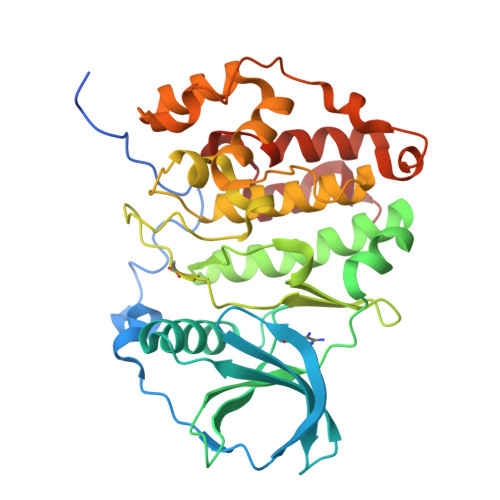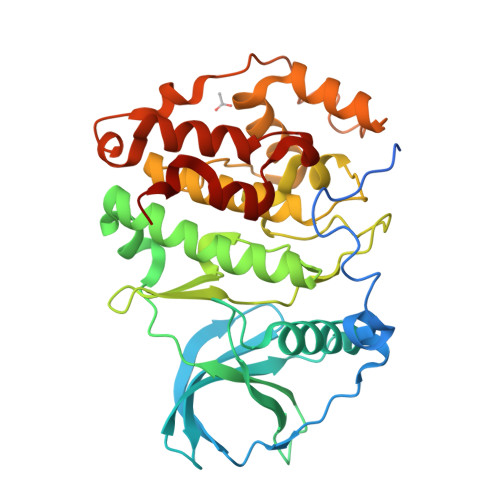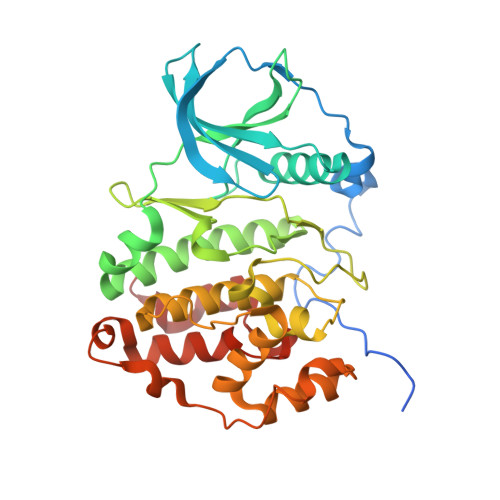A fragment-based approach leading to the discovery of a novel binding site and the selective CK2 inhibitor CAM4066.
De Fusco, C., Brear, P., Iegre, J., Georgiou, K.H., Sore, H.F., Hyvonen, M., Spring, D.R.(2017) Bioorg Med Chem 25: 3471-3482
- PubMed: 28495381
- DOI: https://doi.org/10.1016/j.bmc.2017.04.037
- Primary Citation of Related Structures:
5CT0, 5CTP, 5CU0, 5CU2, 5CX9, 5MMF, 5MMR, 5MO5, 5MO6, 5MO7, 5MO8, 5MOD, 5MOE, 5MOH, 5MOT, 5MOV, 5MOW, 5MP8, 5MPJ - PubMed Abstract:
Recently we reported the discovery of a potent and selective CK2α inhibitor CAM4066. This compound inhibits CK2 activity by exploiting a pocket located outside the ATP binding site (αD pocket). Here we describe in detail the journey that led to the discovery of CAM4066 using the challenging fragment linking strategy. Specifically, we aimed to develop inhibitors by linking a high-affinity fragment anchored in the αD site to a weakly binding warhead fragment occupying the ATP site. Moreover, we describe the remarkable impact that molecular modelling had on the development of this novel chemical tool. The work described herein shows potential for the development of a novel class of CK2 inhibitors.
Organizational Affiliation:
Department of Chemistry, University of Cambridge, Lensfield Road, Cambridge CB2 1EW, UK.





















